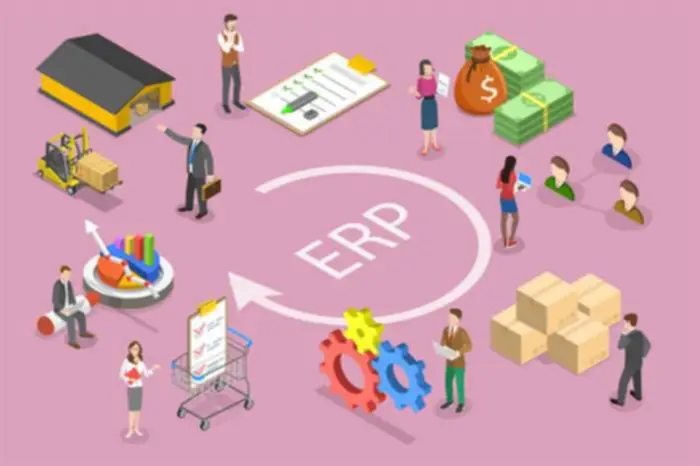If there are too many tasks created in a project, it turns into too difficult for the staff to precisely monitor them. Tasks should be sufficiently small that they can be completed inside 12 hours. Big duties can’t be assessed correctly during a daily timeframe; teams can’t assess how a lot work remains. There are many Agile tools available with built-in burndown chart skills defect burndown chart. If you wouldn’t have any of these applications, an Excel spreadsheet can be utilized to create a burndown chart.
Advantages Of Using A Burndown Chart In Agile

They help the Scrum Master and Product Owner make informed decisions about prioritization, useful resource allocation, and sprint planning while selling transparency and belief with stakeholders. There’s a means qa testing to reply to this issue—incorporating an efficiency factor into the burndown chart. After the primary iteration of a project, the efficiency issue is recalculated to permit for more accuracy. And it’s time to press pause and find out what that problem is and the method to tackle it. Either way, the sooner you catch the discrepancy, the sooner you will get the train back on the tracks. Now that you know what a burndown chart is and what it does and doesn’t inform you, it’s time to rework your data into action.
Waterfall, Agile, Kanban, And Scrum: What’s The Difference?
Burndown charts show the variety of issues over the course of a milestone. The team determines what work needs to be done and estimates how lengthy it will take to finish every task. Let’s talk about what a Scrum burndown chart is, tips on how to arrange and use one, and what benefits and disadvantages you may have if you use a burndown chart. The different factor that strikes the pattern chart above is that the team is unlikely to have the ability to complete the planned Sprint job. It is seen that the tip of the purple line just isn’t quite near the end of the best grey line.
- For occasion, imagine a two-week sprint where team velocity is determined at one hundred story points per week.
- When you monitor the original and present estimation, the burndown is automatically elevated based on any estimation values which might be added to the dash.
- When your actual purple line is transferring above the steering line, it means that dash work is behind schedule.
- It’s displayed in a central location in the office or digitally shared with everyone to maintain the operations transparent and let everyone know the present standings of the team.
- It can also show how a lot work is accomplished in a particular epic or milestone.
Person Tales: 3 Examples To Drive User Value
For example, if the Burndown Chart reveals that the team might not likely attain the sprint objective, then the team can take the necessary actions to stay on observe. You learn (analyze) the chart by comparing the actual effort trend traces to the baseline (estimated effort line). The closer these two lines align, the higher the likelihood that the group will full all duties on schedule. For instance, you could plot days 1 to 10 for a 2-week Sprint (excluding weekends). When the actual effort line deviates considerably from the best effort line, it indicates that your project isn’t progressing as anticipated.


If the Sprint is projected to have work remaining when the time is up, it means the Sprint wasn’t accomplished efficiently. According to the Foundations of Agile Methodology course, failing to complete a Sprint is a typical drawback for brand new Agile teams who are learning the means to work collectively and prioritize assignments. However, a burndown chart provides a nice way to communicate visually to management how the method can enhance for future Sprints.
If your software device requires handbook graphics updating, you need to do so to have a visibly up-to-date status on team progress. The Burn-up chart additionally shows the ideal Burn-up price, similar to the Burn-down chart. But, there’s one important piece of knowledge that the Burn-down chart would not present and the Burn-up chart does show, i.e. Burn-up charts present a scope line that simply tracks the time at which duties are removed or added.
If the group completes all the planned work, the purple line could have a sharp drop down and reach the ideal grey line (the end of the Sprint). However, you also notice strange slight upward movements that instantly revert downwards. Such changes can imply various things, however most of all, the group has added new small tasks to their Sprint Backlog record, modified task execution time, or swapped tasks. When your real pink line is transferring above the steering line, it means that sprint work is behind schedule.
Additionally, although they offer priceless data alongside a global view of the total project, these charts are usually very straightforward & simple to know. Sometimes, the simplicity of Burn-down charts can be their downside. When it involves transparency regarding the modifications of product scope, Burn-down charts aren’t good at showcasing the identical. This is because these charts disguise any info that exhibits any change in the timeline. But, which one tends to be more important in phrases of actual real-world usage? Dashboards permit to track progress of a number of teams on the single overview display.
To create this graph, determine how much work remains by summing the Sprint Backlog estimates every day of the Sprint. The quantity of labor remaining for a Sprint is the sum of the work remaining for the entire Sprint Backlog. Keep monitor of these sums by day and use them to create a graph that reveals the work remaining over time. Whether your team is on observe or not is the first information you probably can learn from your Sprint burndown chart. But you presumably can draw extra data than that by looking at the development line patterns. At the top of the fifth day, each of the duties should add as a lot as a complete of eighty hours, as estimated in step one.
It provides a day-by-day measure of the work that has been completed in a given dash (iteration), or a release (program increment). It also can present how much work is completed in a particular epic or milestone. The whole work left, based on your group’s estimates, is proven as well. The consumer tales it shows are primarily based on the ones chosen by the team within the sprint planning session. Unlike the product chart, this burndown chart uses days on the horizontal axis to gauge the efficiency. Agile groups usually use story factors to estimate the relative effort required to finish consumer tales, epics, or tasks.
Another important factor to recollect is that you need to view the Burndown chart every day. At the start of the Sprint, the graph exhibits relatively little information, and predictions are tough or impossible. Towards the center of the Sprint, the device visualizes rather more info and the tip is easier to foretell. On milestone settings, set „Start Date” and „Release Due Date (Finish Date)”.
The ideal span is round 1 week to 1.5 months.When the span is ready, presently active milestone’s Burndown Chart shall be displayed on Project Home. To use Burndown Chart, check „Use Chart” whenever you create a model new project or from Edit Project primary settings web page. Along these two dimensions, you’ll sometimes find two development strains descending from the highest left to the underside right. Use this free Task Tracking Template for Excel to handle your initiatives better.
For more data on driving a Scrum project in Jira, try our How to do scrum with Jira information. A step-by-step tutorial for organizing and main a prioritization workshop with key stakeholders. NimbleWork is a leading B2B SaaS supplier of collaborative AI-powered Enterprise Adaptive Work and Project Management merchandise and solutions.
Both may be helpful methods to visualise progress, however they sometimes have completely different capabilities. Burndown charts assist project managers establish estimation points early and perceive how a lot work and effort stays. Burnup charts help motivate groups by showing progress towards an finish aim. The c-suite doesn’t need a detail-level look at every project, but they might have to understand how projected timelines are shaking out and whether large-scale objectives have to be recalibrated. A burndown chart is a simple, high-level way to show the standing of every project, dash, or product. Your project supervisor will use these strains to trace expectations in opposition to reality and regulate as needed each inside this dash, over the larger project, and on future initiatives.
The burndown chart is a powerful tool for assessing whether or not sprint objectives are achievable or not. It helps teams monitor progress in direction of completing all consumer tales in the dash backlog. By visualizing remaining work over time, staff members have a transparent understanding of the amount of effort required every day to satisfy the set aims.
Transform Your Business With AI Software Development Solutions https://www.globalcloudteam.com/ — be successful, be the first!



